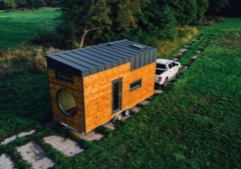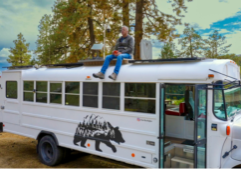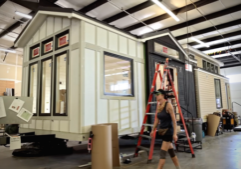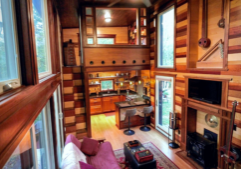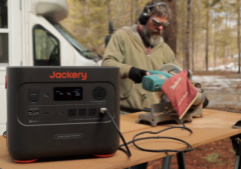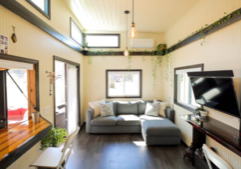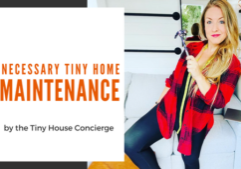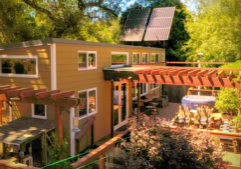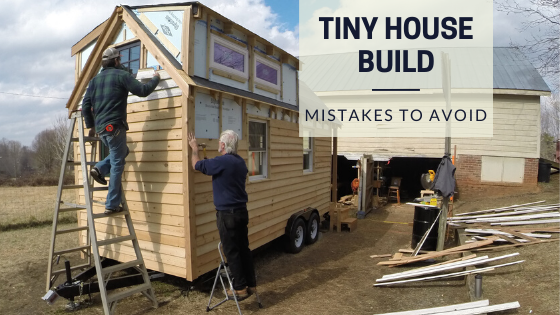
Tiny House Mistakes to Avoid: Build Phase
When constructing your first tiny home, you are likely to make mistakes. That's just a fact; not to worry! Most issues can be fixed, but preparation is key to avoid as many as possible from the start.
It is pretty understandable that build mistakes will happen, especially since most DIYers have no prior experience. Also, the tiny house movement is still in its infancy.
What’s important is that you learn from those mistakes.
In the years that we have been helping others achieve their successful move to the tiny home lifestyle, we noticed some of the common mistakes DIY builders make.
We outlined them below so you won’t make the same ones:
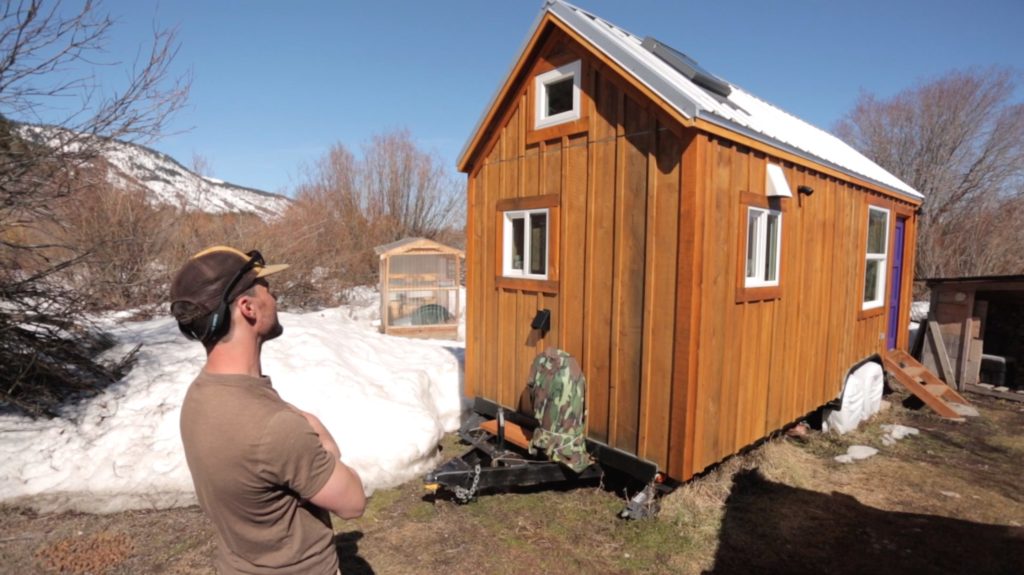
Overlooking Headers
When constructing your tiny house, you should understand that you are going to place a gap in your support structure to give way to your windows and doors. Just imagine taking a good, strong wall and making a hole in it. Terrifying, right?!
Somehow, you are decreasing its structural integrity, and you have to look for a way to balance the weight. And this is why you should not forget to put headers.
Some first-time tiny home builders fail to consider placing a header, and before they know it, they have problems with their structure. These can cause devastating issues, which cause significant delays, extra spending, and heartache.
Going Beyond the Trailer Width (unintentionally)
Newbie tiny home builders often are full of lots of creative layout and storage ideas. Often wanting to maximize everything often leads to common problems, like poor weight distribution and not realizing how easy it can be to go beyond legal width limits.
The maximum legal road limit width of trailers is 102". This means that standard tiny house trailers can only be 90" because you still have to consider your walls and the additional width they would add to the structure.
Most fail to account for the siding, sheathing, drip edge, roof overhang, etc. on both sides. Once installed, it is easy to go beyond the legal limit.
To adjust after your build is complete makes for inconvenient early renovations.
Though building a wider tiny home is more popular than ever before. Just keep in mind, this is less suitable for frequent moves and the necessary wide-load permits.
Because of these factors, you also want to make sure your parking is more secure—parking under the radar is riskier.
Assuming Tiny Home Building is Cheap
While it is true that an essential foundation of the tiny living craze is its affordability, not everything about your tiny home is cheap, nor should it be.
DIY building provides the most cost savings as compared to ordering one from a tiny house builder.
Unfortunately, it can be tougher for a DIYer to access financing, which requires you to have enough money saved up.
Additionally, if you don't have all the funds you need upfront, you can build a little at a time, as you can afford it, but that significantly extends your build timeline.
Sourcing reclaimed and salvaged materials is time-consuming and labor-intensive, but it could potentially save you a few thousand dollars.
There are some areas in your home that you should not skimp on. For instance, your trailer is worth investing in. Beginning with a custom tiny house trailer is your most expedite, reliable option for a secure foundation.
Depending on the size of your house, this can cost as much as $9,000.
Are you seriously looking into repurposing an old trailer? Of course, you must consider the overall structure of your tiny home. Importantly, many old trailers cannot support the weight of a tiny house. As such, you'll need to invest in improving the trailer first.
At the end of the day, the time and money spent to make it work is probably not worth it.
Using Too Many Heavy Materials
While many tiny home experts adviseusing mostly conventional construction materials when building a THOW, some aspects must be tailored specifically for a movable foundation.

Plus, certain materials that you shouldn't use like too many tiles. Consider alternatives that mimic the look of hardwood and tiles that don't weigh as much.
When it comes to roofing, you also have to do away with tar roof shingles as they can be too heavy for your overall trailer capacity, and don't hold up well to highway travel. If possible, look for a roofing contractor in Manchester, NJ, to help you source out the best materials to use for your tiny home.
This highlights a good rule of thumb: ask for help when you need it!
Also, don't feel bad about hiring out more challenging aspects of your build, like hanging rafters or electrical. It's better to have these done right.
While it's possible to use some heavy materials, in parts of your tiny house, don't forget to consider the weight of everything going into your build wholistically— all your materials, appliances, and any holding tanks.
If you begin with tiny house plans, they'll likely come with an estimated dry weight (excludes your stuff and fluids, like propane or water-filled tank).
This is a great starting place, but as soon as you stray from suggested materials, your overall tiny house weight could rise. Though, it could be fine if you save weight with other materials.
Keep track of this during your build, using weight calculators or trips to the weigh station (once the tiny home is dried in).
You do NOT want what to max out the weight capacity of your trailer.
Consider using steel framing to save thousands of pounds!
Building Without a Plan
This mistake is unforgivable. No one should ever take on the task of building a home without a plan. Always remember that proper planning leads to better outcomes. While a lack of it will lead to unanticipated costs and wasted time.
Plan your tiny house build:
- Research & study. Consider signing up for a building workshop.
- Create a realistic budget including 10% extra for contingencies
- Find a place to build
- Build a support network for moral support and building advice.
Once you have a plan, you have the assurance that you can build your home from the ground up without much trouble and can anticipate problems ahead of time. This way, it would be easier to address and adjust accordingly.
Plus, you would be able to map out your schedule so you still balance your life and accomplish other things while building your tiny dream house.
Take our advice: triple how much time you think you'll need to complete your build. Best case scenario, you finish ahead of schedule!
Invest in a set of trusted tiny house plans:
Plans provide a comprehensive overview of dimensions, materials, etc. You can always customize these to better suit your needs or accommodate fresh storage ideas—we did!
Looking for completely custom plans? You can have a designer, architect, or engineer draw it up for you. Or, you simply have to browse through all the available tiny house plans and choose the ones that fit your needs or have someone customize it for you.
Key Takeaways
Building a tiny home for the first time can be daunting. There are tons of factors that you have to consider. Aside from giving up most of your material possessions, you are also taking a lifestyle risk. Simply by leaving behind a conventional chapter in your life, you venture onto a road less traveled in the hopes of a big reward—a renewed sense of self and a just-right home.
With the right prep, you build your own tiny house!
The Ultimate Tiny House Design/Build/Transition Workshop
Sign-up for this acclaimed 16+ hour Digital Tiny House Workshop to learn how to build a tiny house, the legalities to be aware, how to make the transition to living tiny, and more!
INCLUDED with the DIGITAL WORKSHOP:
- 54 bite-sized, engaging episodes
- Downloadable follow-along booklet for note-taking
- Over $300 in FREE bonuses, from tiny house plans to more how to's
- Digital Diploma upon full completion of the course



